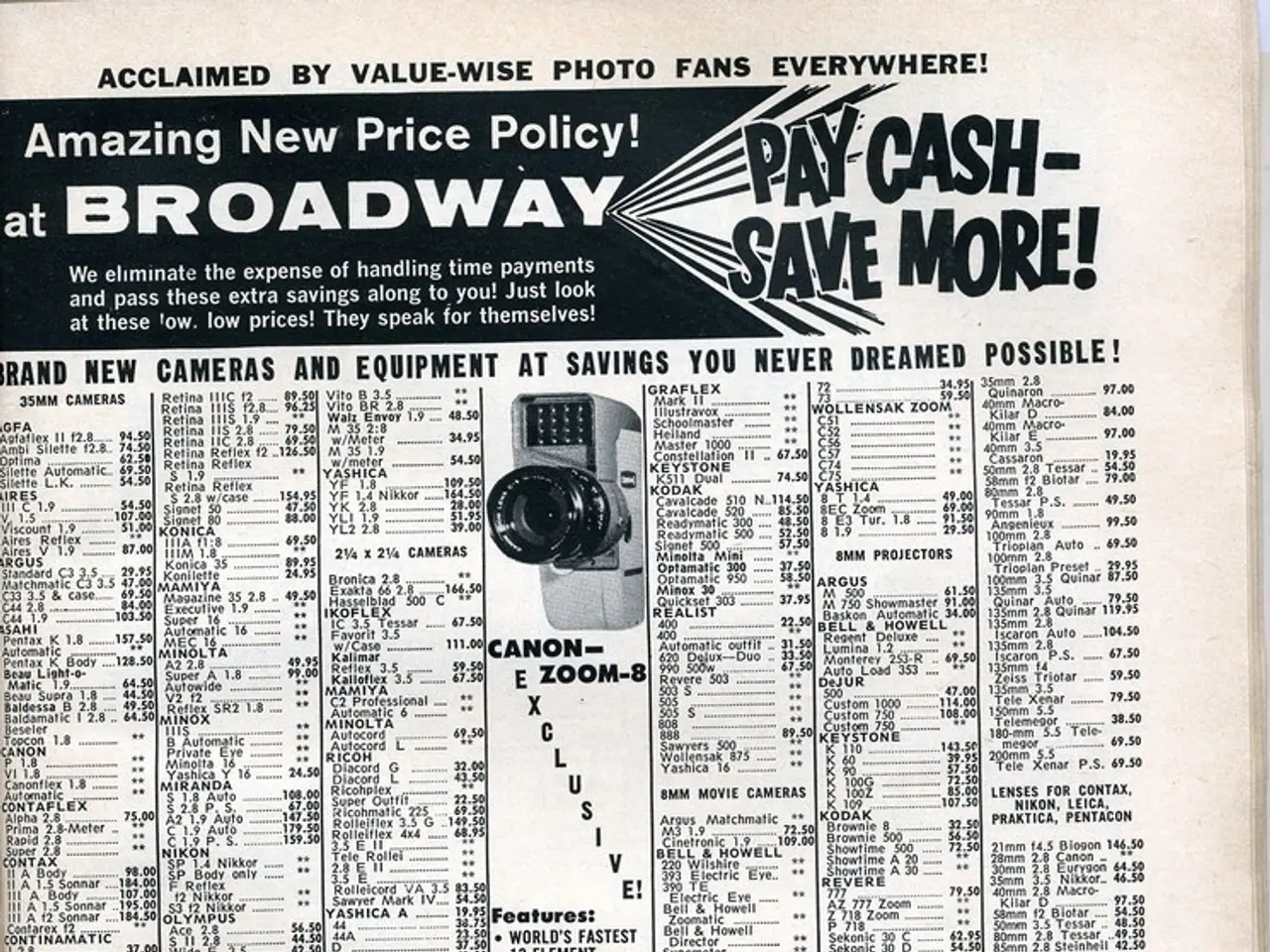Competing Technologies: Which Wireless Connectivity Prevails in Everyday Use - Bluetooth or Wi-Fi?
In today's interconnected world, two technologies stand out as essential for seamless device communication: Bluetooth and Wi-Fi. Both have their strengths and weaknesses, and their ideal use cases are distinct.
Bluetooth, a short-range, low-power technology, is ideal for connecting devices over small distances. With a typical range of around 10 meters, it's perfect for wireless headphones, smartwatches, or fitness trackers, where low power consumption and easy pairing are essential. Bluetooth 5.0, the latest version, can even reach up to 240 meters in ideal conditions with a clear line of sight [1][2].
On the other hand, Wi-Fi, a longer-range, high-bandwidth technology, allows for faster internet speeds. It is designed to cover much larger areas and is perfect for situations where you need a reliable connection across an entire home, office, or public space. Modern Wi-Fi 6 (802.11ax) can offer speeds of up to 9.6 Gbps [1].
While Bluetooth offers relatively low data rates—up to 2 Mbps with Bluetooth 5.0, which is sufficient for streaming audio or connecting peripherals—Wi-Fi supports high-speed data transfer. This makes it suitable for internet browsing, streaming video, and large file sharing [2].
In daily life, you'll likely find yourself using both technologies regularly, depending on the task at hand. Wi-Fi is the go-to technology for fast, reliable internet access and long-range networking, while Bluetooth is best for use in close quarters where devices need to conserve battery life.
Bluetooth devices can run for hours or even days on a single charge due to its low power consumption, making it a better option for portable devices that need to conserve battery life [2]. However, Wi-Fi consumes more power, so it is less efficient for small, portable devices and more suitable for devices with larger batteries or mains power [1].
While both technologies have their security vulnerabilities, Wi-Fi networks are generally more vulnerable to attacks due to their open nature, while Bluetooth operates over shorter distances, making it more secure in controlled environments [1].
In summary, the decision between Bluetooth and Wi-Fi isn't about choosing one over the other, but understanding the strengths and weaknesses of each and applying them to the right situations. By understanding the unique characteristics of each technology, you can make informed decisions that ensure seamless and efficient device communication.
| Feature | Bluetooth | Wi-Fi | |-----------------|---------------------------------------------|--------------------------------------------| | **Range** | Short (10–240 m) | Long (100+ m) | | **Speed** | Low (up to 2 Mbps) | High (up to 9.6 Gbps) | | **Power Use** | Very low | Higher | | **Use Cases** | Personal device pairing, audio, wearables | Internet, networking, streaming, gaming |
References: [1] TechRadar. (2021). Bluetooth vs Wi-Fi: Which is better for you? https://www.techradar.com/news/bluetooth-vs-wifi-which-is-better-for-you [2] How-To Geek. (2021). Bluetooth vs Wi-Fi: The Key Differences and When to Use Each. https://www.howtogeek.com/761460/bluetooth-vs-wi-fi-the-key-differences-and-when-to-use-each/
Tech and gadgets, such as wireless headphones or smartwatches, often rely on Bluetooth for seamless communication over short distances due to its low power consumption. On the other hand, Wi-Fi, with its longer range and high-bandwidth capabilities, is ideal for internet browsing, streaming video, or large file sharing in a wider area.




